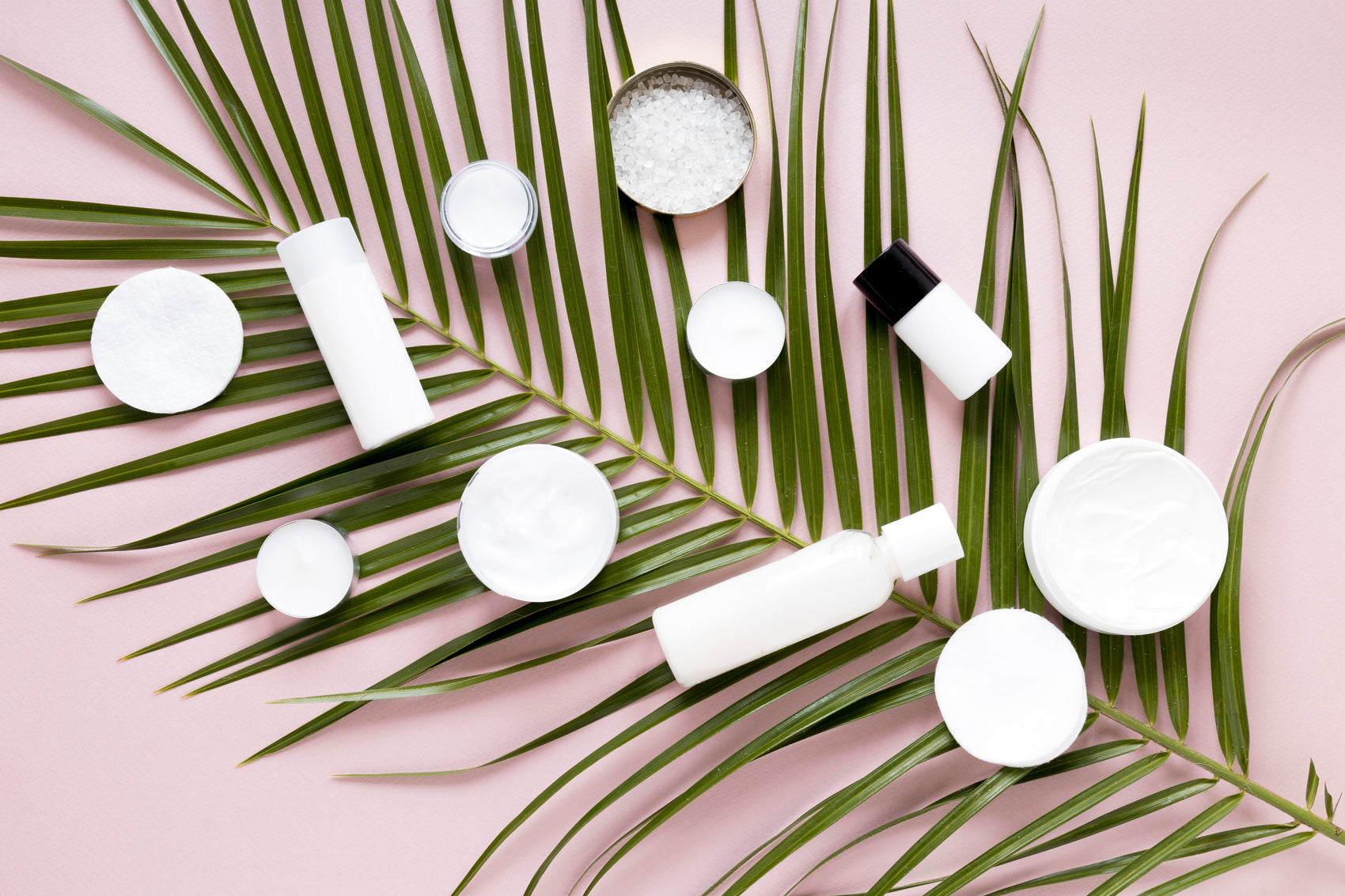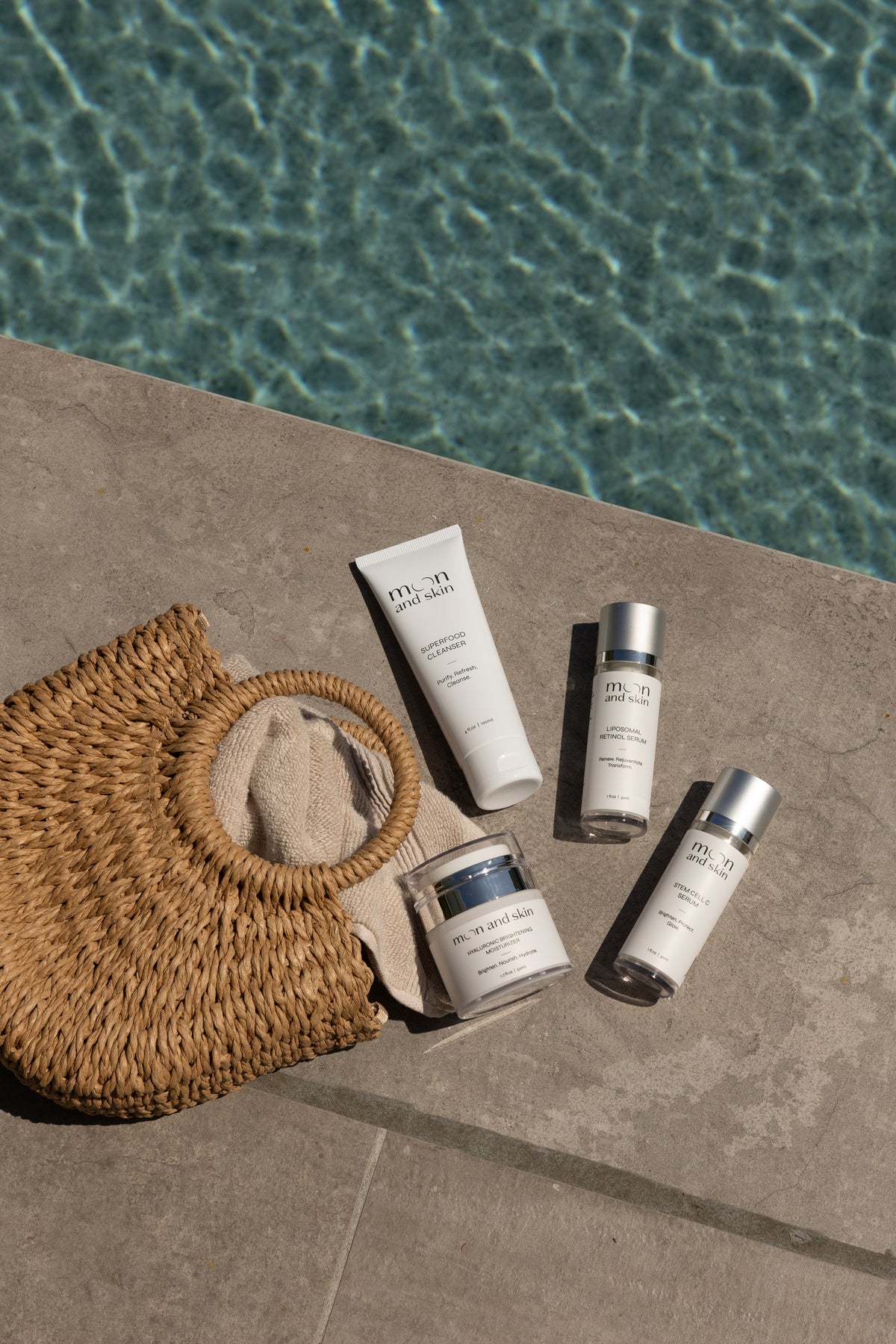Table of Contents
Introduction
Have you ever wondered why your skin still feels dry, even after slathering on a thick cream? Or perhaps you've noticed that your complexion looks dull, despite using multiple products? These common frustrations stem from a misunderstanding of two crucial skincare concepts: hydration and moisture. You may have heard these terms used interchangeably, but they refer to distinct processes that significantly impact the health and appearance of your skin.
In our quest for clean, thoughtful skincare at Moon and Skin, we recognize the importance of understanding these differences. Hydration pertains to the water content in your skin, while moisture relates to the oils that help retain this water. This distinction is vital as it dictates the type of products you should incorporate into your routine.
As we explore the nuances of hydrating vs moisturizing throughout this post, we’ll provide insights on how to determine your skin’s specific needs and how to effectively address them. At Moon and Skin, our mission is to empower you with the knowledge necessary to make informed skincare choices, ensuring your skin feels healthy and radiant at every phase of life.
Key Takeaways
- Hydration refers to the water content in your skin cells.
- Moisture involves the oils that help seal in this hydration.
- Understanding your skin type and condition can guide your product choices.
- Our products, particularly the Stem Cell C Serum, can provide essential hydration and moisture to support your skin's needs.
The Science Behind Hydration and Moisture
To grasp the differences between hydration and moisture, we need to delve into the science of skin health.
What is Hydration?
Hydration is about water. When we say a product hydrates the skin, we mean it increases the water content in the skin's outer layer (the epidermis). Hydrated skin appears plump, smooth, and healthy. Conversely, when skin is dehydrated, it can look dull, feel tight, and display fine lines.
Key Ingredients for Hydration
To boost hydration, look for products that contain humectants. These ingredients attract water from the environment and deliver it to the skin. Some common humectants include:
- Hyaluronic Acid: Known for its ability to retain up to 1,000 times its weight in water, making it a superstar in hydration.
- Glycerin: Another powerful humectant that draws moisture to the skin.
- Aloe Vera: A natural hydrator that soothes and delivers moisture.
In our collection, our Hyaluronic Brightening Moisturizer serves as an excellent choice for those seeking hydration, with its combination of hyaluronic acid and kojic acid to brighten and plump the skin.
What is Moisture?
Moisture, on the other hand, involves sealing in that hydration. Moisturizers form a barrier on the skin that prevents water loss. They typically contain occlusives and emollients:
- Occlusives: Ingredients like petrolatum, lanolin, and beeswax that form a protective layer on the skin's surface, locking in moisture.
- Emollients: These ingredients, such as fatty acids and oils, smooth the skin and improve its texture.
A good moisturizer will not only add moisture but also help reinforce the skin barrier, which is essential for maintaining overall skin health.
The Importance of Both Hydration and Moisture
For optimal skin health, it’s essential to address both hydration and moisture. Think of hydration as filling a bucket with water, while moisture is the lid that keeps that water from spilling out. Without one, the other cannot function effectively.
Summary of Key Points
- Hydration increases water content in the skin, while moisture retains it.
- Humectants are key for hydration, while occlusives and emollients are crucial for moisture.
- Both are necessary for healthy, glowing skin.
How to Determine Your Skin's Needs
Understanding whether your skin needs hydration, moisture, or both can be tricky. Here are some tips to help you assess your skin's condition.
Signs of Dehydrated Skin
Dehydrated skin often presents the following characteristics:
- Dullness or lack of radiance
- Fine lines and wrinkles that appear more pronounced
- Tightness or discomfort, especially after cleansing
- Rough texture or flakiness
If you notice any of these signs, you may need to incorporate more hydrating products into your routine.
Signs of Dry Skin
Dry skin, on the other hand, is characterized by:
- Flaky or scaly patches
- Redness or irritation
- A rough texture
- Increased sensitivity
If your skin is dry, you may need to focus on moisturizing ingredients that help seal in hydration.
Conclusion on Assessing Your Skin
By observing how your skin feels and looks, you can determine whether it needs more hydration or moisture. For many, the answer may be both, especially during seasonal changes or following harsh treatments. Our Liposomal Retinol Serum can also be beneficial, providing deep nourishment while addressing signs of aging.
Building Your Skincare Routine: Hydrate First, Moisturize Second
Once you understand the differences between hydration and moisture, the next step is building a routine that addresses both needs.
Step 1: Cleanse
Begin with a gentle cleanser like our Superfood Cleanser, which nourishes while it cleanses, setting the stage for better absorption of subsequent products.
Step 2: Hydrate
After cleansing, apply a hydrating serum or treatment. Look for products that contain humectants like hyaluronic acid or glycerin. Our Stem Cell C Serum is an excellent option, as it not only hydrates but also offers antioxidant protection.
Step 3: Moisturize
Follow up with a moisturizing cream or lotion to lock in the hydration. Choose a product that feels comfortable on your skin—thicker creams for dry skin and lighter lotions for oily skin.
Step 4: Protect
Don't forget sun protection during the day. A broad-spectrum SPF is crucial to protect your skin from harmful UV rays and prevent moisture loss.
Seasonal Adjustments to Your Routine
As seasons change, so do our skin's needs. Here’s how to adjust your routine accordingly:
Winter
In colder months, our skin often requires extra moisture due to low humidity levels. Switch to heavier creams or incorporate facial oils to combat dryness. Consider layering products as well—apply a hydrating serum followed by a rich moisturizer.
Summer
During warmer months, lighter products may suffice. Opt for gel-based moisturizers that hydrate without feeling heavy. Ensure you stay hydrated internally by drinking plenty of water and consuming water-rich foods.
Summary of Routine Adjustments
- Winter: Thicker creams and oils for moisture.
- Summer: Lightweight gels for hydration.
FAQs
1. Can I use a product that hydrates and moisturizes at the same time?
Yes, many products combine both properties. Look for formulations that contain humectants (for hydration) and occlusives/emollients (for moisture).
2. How often should I apply hydrating and moisturizing products?
For best results, apply hydrating products after cleansing and before moisturizing, both morning and night.
3. Do I need a separate hydrator and moisturizer for my skin?
It depends on your skin type. Some may thrive with just one product, while others may benefit from both to achieve optimal hydration and moisture balance.
4. How do I know if my skin is dehydrated or just dry?
If your skin feels tight and looks dull, it may be dehydrated. Dry skin typically appears flaky or scaly. Assessing how your skin reacts to products can also provide insights.
5. What lifestyle factors affect hydration and moisture levels?
Diet, hydration, environmental factors, and skincare routines all play a role. Ensure you drink ample water, eat a balanced diet, and choose appropriate skincare products for your needs.
Conclusion
Understanding the difference between hydrating and moisturizing is crucial for achieving optimal skin health. By incorporating both elements into your skincare routine and recognizing your skin's unique needs, you can maintain a radiant, youthful complexion.
At Moon and Skin, we’re committed to supporting your skin through every phase of life. Explore our Bundle & Save collection to build a comprehensive routine that addresses both hydration and moisture, ensuring your skin remains nourished and glowing.
Embrace the journey of skincare with us, and let’s celebrate the beauty of your skin together!







